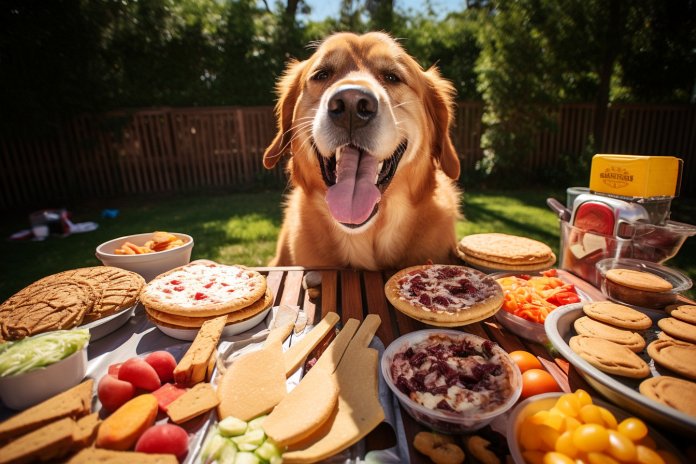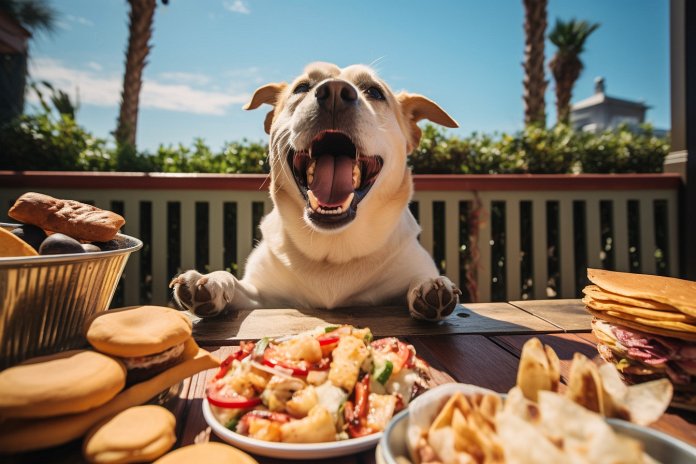
Do you love indulging in greasy, delicious foods like burgers and fries? And do you find yourself with a pair of puppy-dog eyes staring at you while you eat? While it’s tempting to share these treats with your dog, it’s important to understand that their digestive system is different from ours.
Signs Your Dog has had Too Much Greasy Goodness
If you suspect that your dog has had too much greasy food, watch out for symptoms such as vomiting, diarrhea, stomach aches, lethargy, weakness, irregular heartbeat, fever, and difficulty breathing. These symptoms can be remedied, but regular exposure to greasy food can lead to pancreatitis.
Body Language
Look out for signs like panting, pacing, weakness, drooling, lack of focus, sweaty paws, and sleepiness as indications that your dog may have consumed greasy food. Other signs include diarrhea, irregular heartbeat, pale gums, lethargy, extreme fatigue or weakness, howling or whimpering, stomach ache, vomiting, and fever.
The History of Grease and Dogs
Historically, grease has been proven to be a poor choice for your dog’s diet. Veterinarians have reported numerous cases of pancreatitis caused by regular consumption of bacon and bacon grease. Certain dog breeds, such as Cavalier and King Charles Spaniels, Cocker Spaniels, Boxers, and Collies, are more prone to pancreatitis when fed greasy, fatty foods.
The Science Behind Greasy Foods
Feeding your dog occasional bacon or grease won’t cause permanent harm, but it is not recommended as a regular part of their diet. Grease can cause intestinal distress, vomiting, and other issues. Regular consumption of greasy, fatty foods can enlarge the pancreas gland, which hampers its ability to release digestive enzymes. This leads to poor absorption and digestion of food.
Training Your Dog to Stay Away From Greasy Food
Training your dog to avoid greasy food requires consistency and persistence. It’s important to resist their cute begging faces. Avoid slipping food to your dog under the table, as this not only reinforces bad behavior but can also be dangerous. Consider crate training your dog during meal times or teach them to stay out of the kitchen to avoid temptation.
“Train your dog to avoid the greasy temptations and keep them healthy and happy.”

Tips & Things to Know
1️⃣ Limit your dog’s intake of greasy foods: While it can be tempting to share your greasy treats with your dog, it’s important to remember that their digestive systems are not designed to handle the same foods as ours. Excess amounts of greasy foods can lead to serious digestive issues and pancreatitis in dogs.
2️⃣ Watch for signs of greasy food overindulgence: If you suspect that your dog has had too much greasy food, keep an eye out for symptoms such as vomiting, diarrhea, stomach aches, lethargy, and irregular heartbeat. These signs indicate that your dog may be having a negative reaction to the greasy food they consumed.
3️⃣ Train your dog to avoid greasy food: It’s essential to train both yourself and your dog to stay away from greasy food. Resist the temptation to give in to your dog’s begging and establish consistent boundaries. Consider crate training or teaching your dog to stay out of the kitchen during meal times to prevent accidental slip-ups.
Frequently Asked Questions, Answered ✅
1. Why shouldn’t dogs be fed greasy snack foods?
– Dogs’ digestive systems are not designed to handle excessive amounts of grease, which can cause digestive issues, pancreatitis, and other discomforts.
2. What are the signs that a dog has had too much greasy food?
– Signs include vomiting, diarrhea, stomach aches, lethargy, weakness, irregular heartbeat, fever, and difficulty breathing.
3. What are some body language signs that a dog has gotten into greasy food?
– Panting, pacing, weakness, drooling, lack of focus, sweaty paws, and sleepiness.
4. Which dog breeds are historically more prone to pancreatitis caused by greasy foods?
– Cavalier and King Charles Spaniels, Cocker Spaniels, Boxers, and Collies have a higher risk.
5. How can you train your dog to stay away from greasy food?
– Train yourself to be consistent and persistent in saying no to your dog’s begging. Crate training and teaching them to stay out of the kitchen can also be effective methods.